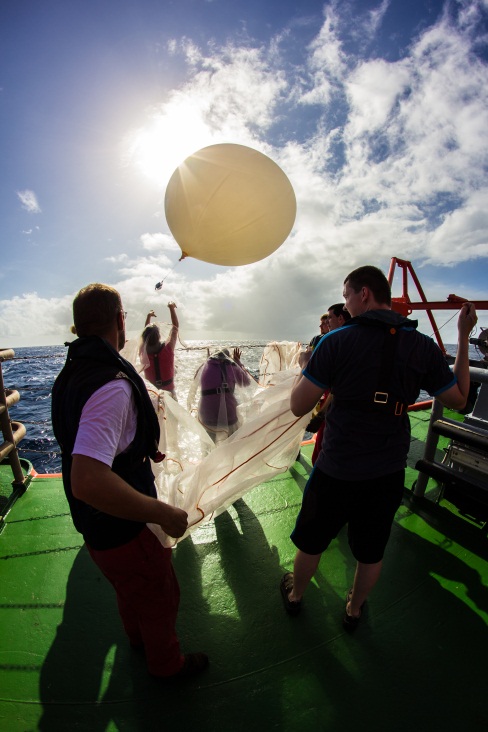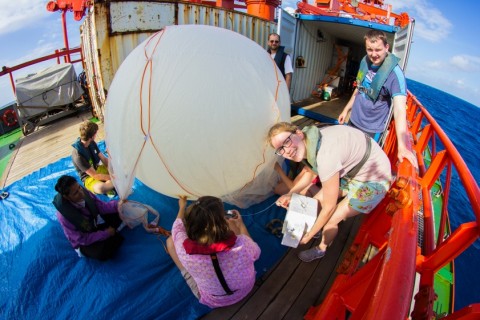Sunday, 27.07.2014: Entering the high risk area
After leaving the 26h station we headed north and entered an area that is declared as high risk area for pirate attacks by NATO. We will stay inside this area until the end of our journey, since the whole Maldives lie within it as well. What cruising in the risk area means for us was explained to all scientists by Captain Oliver:
• A new alarm is introduced and upon hearing it we all meet on the Kegelbahn at the table tennis.
• The ship should be as dark as possible at night. All portholes and curtains need to be closed after dark. The light on deck will remain off. This also means that nightly measurements take place in the light of torches only.
• Only those persons needed to conduct measurements are allowed outside between 22:00 and sunrise.
This does not limit our comings and goings on deck much, since the main deck has been closed for the entire journey due to the strong winds anyway. The risk of a pirate attack is statistically low: The last time a ship was in danger in the area we will be crossing was 2011. And the darkness on deck has one huge advantage: With all lights turned off you are finally able to see all 10^9 stars in the southern sky. Consequently a large crowd gathered outside to enjoy them until curfew. After that the socializing was not over though: We met to play table tennis or sit by the red fridge and share the impressions of the day.
Monday, 28.07.2014: Ozone sonde, heat and sunshine
It’s Monday. A look on the daily plan shows that there is not much on the schedule. Arriving at the scientific bridge I am greeted by an excited chief scientist: Tropospheric ozone measurements have dropped to very low levels this morning. Immediately an ozone sonde is scheduled to be launched at 15:00. During the preparation of the sonde we notice the temperature on the scientific bridge rise and ask for the reason on the bridge. Well, the air condition up here has failed. The good thing about working on the scientific bridge is that unlike in the other labs you always have a lot of light due to the large windows. The downside of the windows is that the room heats up like a greenhouse. So we sit upstairs with 35°C and finish the ozone sonde preparation. Due to decreasing wind speed and wave height the main deck is opened around lunch time and numerous helpers and spectators make it outside to the launch of the large balloon and the sonde.
At 17:00 we reached our second 24h station. This time we will use the Lagrangian method of following the same water mass the whole time and therefore deploy a 15m long drifter that we can follow. With 6 hourly CTD stations there is a bunch of work coming up for the ‘water samplers’.
By Alina Fiehn

